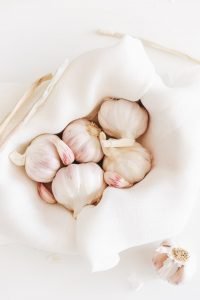If you’ve cooked with Aleppo pepper before, you know it’s a unique ingredient. It has a smoky, mild heat and a fruity, raisin-like flavor that makes it unlike any other pepper in the world.
The right Aleppo pepper can make your dishes shine, but only if you get the good stuff. In this post, we’ll share some tips for how to tell if you’re cooking with the right Aleppo pepper.
What is Aleppo Pepper?
Aleppo pepper comes from the northern Syrian city of Aleppo. In Turkey and Syria, it is known as pul biber (pronounced “pull bibber”) or halaby pepper and is one of the most popular spices in the region.
What Does Aleppo Pepper Taste Like?
Aleppo pepper has a rich, complex flavor that is great for many types of dishes. It has a moderate heat level that sits between cayenne and crushed red peppers on the Scoville scale, which measures heat levels in chili peppers. Its fruity undertones are similar to sun-dried tomatoes or raisins while its smoky flavor adds depth to many dishes.
The Best Aleppo Pepper Brands
There are many different producers of Aleppo
The Aleppo pepper is an ingredient that adds a unique flavor to any dish. It is a great alternative to the more common spices, and it is something that has its special place in many recipes.
The Aleppo pepper comes from Syria, but you can also find it in some US markets. The best way to know if you are cooking with the right one is to take a look at the color. The Aleppo pepper should be a deep red color. In some cases, there may even be a bit of black in it as well. It should also have a nice amount of heat to it, but not so much that it will overpower your food or make your mouth burn for hours on end.
The Aleppo pepper is mostly used as a spice for cooking, but it can also be used as a garnish on top of the food before serving. If you want to add more heat to your dish you can use more of this spice than just one teaspoonful. This will depend on how spicy your meal already is, and what other ingredients you have added into it.
You can also use this spice as a garnish on top of dishes such as soups or stews. You do not need to put too much of it in there because it will not change the flavor
The aroma should be smoky and earthy, with a mild heat. A good batch of Aleppo pepper should have both the seeds and the skins included. If you’re seeing a lot of red, there’s probably not much skin in the mix. If you’re seeing a lot of black, there may not be much seed in the mix.
If it smells like cayenne or chili flakes, it’s probably not authentic Aleppo pepper.
The first thing to look for is the color: The flakes should be rust-red with hints of burgundy and orange. (A really high-quality batch could even have streaks of green.) It should look like someone took a mortar and pestle to a whole lot of different chiles, including dried green ones. That’s because they did! It’s an essential part of the process: Before they’re dried, chiles are roasted over an open flame that can be fueled by any number of things—wood chips, charcoal, fruit pits—which gives them their signature smokiness.
The answer to this question is not as simple as a yes or no. The problem is that Aleppo pepper can be from three different places: Syria, Turkey and the United States. But if you are buying it from Syria or Turkey, it is not likely to be the same quality. This blog will explain some of the differences between these three types of Aleppo peppers and how to spot the difference.
Aleppo peppers are named after their region of origin, the city of Aleppo in Syria. But today, Aleppo peppers are cultivated in several countries, including Turkey and the United States.
Syrian Aleppo peppers are known for their beautiful color, vibrant flavor and medium heat. Syrian Aleppo peppers grow in the north-central part of Syria, near Aleppo city. This region has a unique microclimate with fertile soil that is perfect for growing high-quality chilies (paprika).
This is a pepper you will find in the spice section of Middle Eastern grocery stores. It’s not as spicy as cayenne, but it does have a good bite to it. You can also use cayenne in place of Aleppo pepper, but cayenne will be hotter and less sweet.
Toasting the Aleppo pepper before you cook with it intensifies the flavor and gives a bit of a smoky finish. I recommend toasting for recipes that require more than 1 teaspoon of Aleppo pepper. To do so, put the desired amount in a dry frying pan over medium heat and toast until fragrant and very lightly colored. Let cool before grinding or using whole.
If you’re using this to make lentil soup, grind before adding to the pot — it’s much easier than trying to grind lentils and pepper together later on. If you’re using it to top hummus, just add whole pieces if they’re small enough, or crush them in your fingers before sprinkling on top.
I’ve written before on the difference between Aleppo Pepper and Maras Pepper. The two peppers have many similarities: they are flakey, mildly spicy and fruity, with an earthy undertone. I like to think of Aleppo Pepper as the ‘cooler’ cousin of Maras Pepper — both are delicious, but Aleppo is more widely grown and has a lower price point.
If you’re looking for the real deal, you want to be sure you’re buying from a reputable source. Make sure the pepper has a deep red color (not bright red) with hints of black or brown. You should see some seeds mixed in with the flakes. Some black seeds are okay; this means the pepper was harvested at a point when it was ripe enough to have started pulling nutrients back into its seeds.
Aleppo Pepper should have a mild spice level, although it can range from mild to medium-hot depending on where it was grown. If your mouth is burning after tasting your Aleppo Pepper then you might have purchased one that is too hot.
I hope that helps!
Best,
Owen
Aleppo pepper is a popular spice used in Middle Eastern and Mediterranean cooking that has a moderate heat level and slightly fruity, raisin-like flavor. The name comes from Aleppo, the largest city in Syria, where it’s been cultivated for thousands of years.
Aleppo peppers are dried chili peppers that start out bright red but then turn purple or brown as they age, giving them an unmistakable burgundy color. They have a moderate-to-mild heat level that ranges between 2,500 and 10,000 Scoville Heat Units (SHU), which is less than half as hot as jalapeño peppers.
The texture of ground Aleppo pepper is flaky instead of powdery like paprika, and it can be used in any recipe that calls for paprika. Some people prefer to keep theirs whole so they can toast them in a pan to release their flavor before adding them to salads or stews.
Aleppo pepper has become increasingly popular in recent years as more people discover Middle Eastern cuisine, and it’s a common ingredient in Mediterranean dishes such as hummus and baba ganoush. It’s also frequently used on grilled meats like chicken or lamb chops and can be found on the tables at

